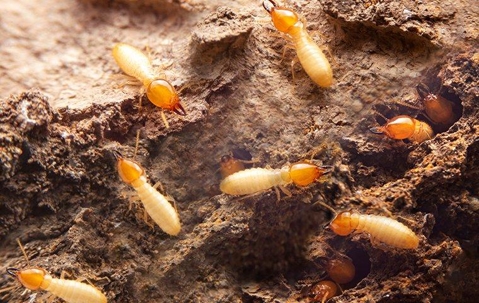Most homeowners understand that termites can be very devastating on any property. However, few homeowners know exactly why some houses wind up with termite damage and others are spared. Is it dumb luck? It is something in the water? In reality, the best termite prevention strategies start by knowing the signs of an infestation.
Five Early Warning Signs Of Termite Infestation
Termites will invade any home, but the homeowners who understand what to look for can stop an infestation before it reaches a critical stage. However, it only takes a year to a year and a half for most termite species to do damage that costs over $3,000 on average, so spotting the signs early is essential.
Since termites are very small and usually work under your home or within your walls, you probably won’t see the worker termites themselves. Rather, you’re more likely to notice the signs of an infestation, which include:
- Frass: This is a fine, sawdust-like material that binds with termite droppings. As they work and eat within your walls, they’ll kick frass out of the tunnels where it will build up along baseboards on the floor.
- Termite swarms: A swarmer is a winged termite whose task is to reproduce and make new termite colonies. Swarms look like gray clouds of buzzing, winged termites who congregate close to trees and light posts. You’re most likely to see a swarm on a muggy day after a few days of rain, as these are ideal mating conditions.
- Ill-fitting doors and windows: If your doors and windows are becoming difficult to slide or open, you’ll want to check for a termite infestation. These tightening frames could be an indication of internal damage caused by termites.
- Clicking noises coming from the walls: Sometimes, termites will emit a soft clicking noise as they work and eat. You should be able to hear it in cases of significant infestation, as long as you’re listening in the right spot.
- Rotted, damaged wood: If you have an unfinished basement or have a view of any wooden support beams or framing materials in or around your house, you should check it for damage. If it is damaged from moisture, then it will attract termites. If it is damaged without moisture, then there may already be termites working on it.
Professional Termite Prevention Strategies
In a perfect world, you won’t notice any of these potential signs of infestation. But that doesn’t mean you’re not at risk. If you’re not taking a proactive approach to termite defense, then your home could be a termite haven waiting to happen.
Professional pest control technicians recommend the following tips to limit your chances of an infestation:
- Moisture management: termites are highly attracted to moisture-damaged wood, so limiting moisture buildup in your home is essential to limit termite attraction. Watch for leaking pipes and try to keep rain runoff from building up near the side of your home.
- Limiting soil-to-wood contact: creating a buffer between the soil and your home’s foundation can help prevent termites from easily discovering your home as their next source of food.
- Firewood storage: if you store firewood near the home, it will likely attract an infestation. Firewood should be stored off of the ground, away from the house, and in a structure that can withstand termite damage.
These tips can help limit your chances of infestation, but we cannot put our professional guarantee on them. The only proven termite prevention method is professional pest protection services. So whether you see signs of termite damage or you just want to get out in front of the problem, don’t wait until the damage is done. Call White Knight Pest Control right away.

